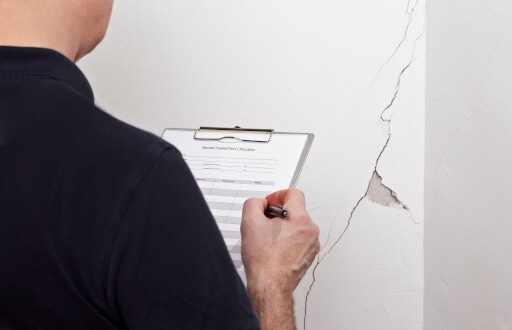Deducting from or withholding a security deposit can be a tricky task that’s commonly misunderstood by both landlords and renters. Every renter is hopeful to receive their security deposit back in full, and every landlord is hopeful that their property will be left in the same condition it was in on move-in day. Let’s clarify the legitimate reasons for withholding part or all of a security deposit from a tenant.
Reasons to Require a Security Deposit
It’s standard for landlords to request a security deposit from tenants before they move in. A security deposit assures you that the tenant will be more motivated to pay rent on time and abide by the lease (if they want to have their deposit returned to them upon move-out). The security deposit will also give you some peace of mind that the money will pay for certain items or damages when the tenant moves out. When move-out day arrives, you may find that the unit was left with broken windows, stains in the carpet, or holes in the wall. This is where the security deposit comes into play.
Legal Reasons to Deduct from a Security Deposit
The general rule is that a landlord or property manager can only withhold money from the deposit for actual damages, whether they are material or financial. This means that you can deduct money if the tenant owes you past due rent or fees or if they caused damages beyond normal wear and tear. Laws vary greatly by state, so check your local laws to be sure of what is and isn’t allowed regarding security deposit deductions. There are a few situations that will cover the most common reasons for needing to deduct from or withhold the security deposit.
If your tenant breaks the lease
Although you don’t have to automatically keep the security deposit because your tenant breaks the lease, many landlords choose to do so to recover from the breach of contract. Other landlords may choose to charge an extra month’s rent for breaking the lease early, or even both.
Some renters end up needing to break their lease term for one reason or another, such as having to move cities for a new job. It happens! Withholding the security deposit for breaking the lease is up to you (and your state laws). Be sure to require a 60-day notice to vacate form from your tenant(s) so that if they need to break the lease, they know that they are required to pay rent (and fees) for the remainder of those 60 days. This should give you plenty of time to find a new tenant.
If your tenant abandons the property and has unpaid rent
If your tenant moves out of the property and stops paying rent, therefore abandoning it, you will likely have a claim to the security deposit because it takes a few weeks, if not months, to find a replacement tenant. Your previous tenant would still be responsible for rent during that time (as stated in your lease), and if they don’t pay, you should be able to withhold the deposit to offset the unpaid rent and send a demand letter requesting the remaining balance. Again, check with your state laws before you make any final decisions.
However, if you keep a month’s worth of rent from the deposit (if the deposit covers that much), but fill the property in less than a month’s time, then you would need to return any overlapping funds.
If the property needs to be cleaned
If you have to pick up and dispose of a few items after the tenant moves out, it’s not grounds to withhold part of the security deposit. However, if the tenant left garbage and unwanted items in the property, rotting food in the fridge, or abandoned their personal property, it’s a different story. Be sure that your lease requires tenants to do a thorough cleaning of the unit prior to move-out. It may be helpful to also send them a list of everything that needs to be cleaned, along with the cost per item if the landlord, property manager, or maintenance team has to clean or repair the item instead.
If the property needs to be painted
Many landlords repaint the interior of the property to attract a new tenant. It’s routine and usually performed every few years, so you shouldn’t deduct the costs of hiring a painter or purchasing paint from the security deposit.
However, if the tenant painted the walls without your permission, the cost of repainting to its original state is deductible. The same holds true if the repainting is necessary because the tenants caused stains to the paint. If you like the color the tenant painted the walls and don’t mind that they did not ask permission, then there’s no reason you should charge them to repaint.
If there’s property damage
If your tenant or their guests cause damage to the property beyond normal wear and tear, you can put the security deposit toward repair or replacement. Some damage is fairly obvious, such as major holes in the wall or the smell of smoke in the unit. Other conditions may not be so immediately apparent but are still deductible from the security deposit. These may include:
- Missing smoke or carbon monoxide detectors
- Broken or missing window blinds
- Appliances broken due to negligence
- Accumulation of dirt, mold, and stains from a lack of cleanliness
Why You Shouldn’t Charge for Normal Wear and Tear
Every property suffers from normal wear and tear, and you can’t deduct that basic upkeep from the security deposit. If the tenant cleans regularly and maintains the unit well, then as a general rule of thumb, the landlord is always responsible for repairing normal wear and tear after move-out.
Normal wear and tear typically includes:
- General carpet wear
- Sun-faded wallpaper or paint
- Nail holes in walls from hanging pictures, mirrors, or art
- Bathroom mirror desilvering
- Appliances no longer working, but not due to misuse
- Warped windows or doors due to temperature or age
- Regular amounts of dust accumulated after move-out
- Shower or tub discoloration from lack of proper ventilation
- Worn or scratched enamel in bathtubs, sinks, or toilets
- Partially clogged sinks or drains caused by aging pipes
- Loose grouting in bathroom tiles
If a tenant was simply living in the property the way it was intended, and did not damage anything by means of abuse, negligence, accident, guests, animals, or lack of normal cleaning, then a landlord has no right to any deposit deductions. Since HUD doesn’t have an official list of acceptable deductions, landlords should go by their state laws and use their best judgment.
Provide Receipts of All Necessary Repairs
It’s important to document all the necessary repair work to prove your expenses to the tenant. It will help your tenant understand what, how much, and why they’re being charged. You can either document your repair-related expenses by hand or track expenses with an online platform like Apartments.com. Upload receipts for repairs and export them via CSV or PDF. If you deducted money from the security deposit and there is no proof that there were any damages to the property or proof of repairs done, you may find yourself in small claims court with your tenant. Protect yourself and your property by keeping receipts and providing each tenant with an itemized security deposit deduction form (or a security deposit return letter) after the final move-out inspection.











